ANIMALS
30 Most Unusual Rainforest Animals
Published
11 months agoon
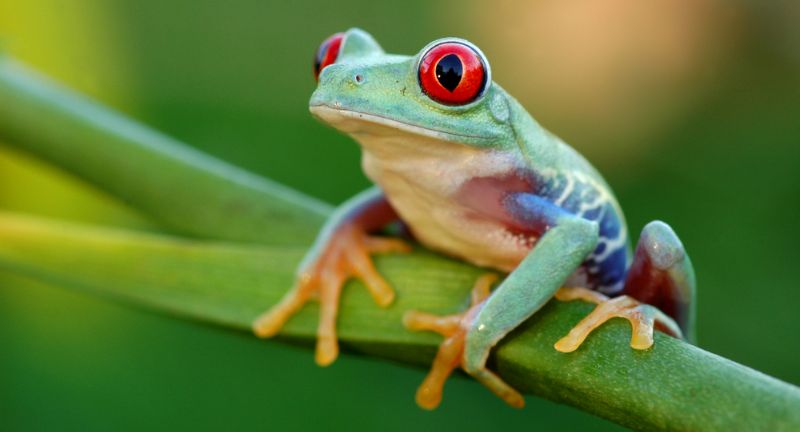
Shutterstock
The rainforest, Earth’s oldest living ecosystem, is a treasure trove of biodiversity, harboring some of the most unusual and intriguing animals found anywhere on the planet. Within its verdant embrace, from the dark, moist floor to the dizzying heights of the canopy, dwell creatures of astonishing variety and unique adaptations. The list of the 30 most unusual rainforest animals showcases the incredible diversity and evolutionary innovation that thrive under its dense canopy. These animals, ranging from the stealthy jaguar, with its silent paws and piercing gaze, to the tiny poison dart frog, whose vivid colors warn of its lethality, embody the mystery and the majesty of the rainforest. Each species, whether it flies, crawls, or swings through this verdant world, tells a story of adaptation, survival, and the interconnectedness of life, emphasizing the critical need to conserve these precious ecosystems for the health of our planet.
Glass Frog
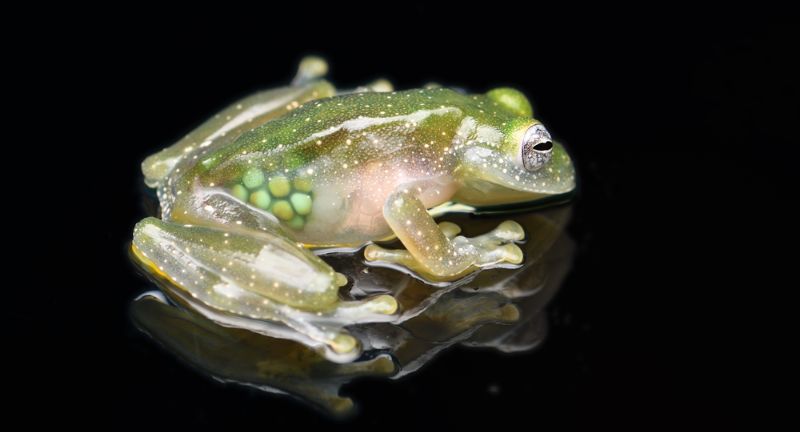
Shutterstock
The Glass Frog is renowned for its translucent skin, which allows a view of its internal organs from beneath. Native to the rainforests of Central and South America, this unique amphibian spends most of its life in the trees. The visibility of its heart, liver, and gastrointestinal tract makes it a subject of fascination among scientists and nature enthusiasts alike. Its almost invisible appearance serves as a natural camouflage against predators in the lush rainforests.
Okapi
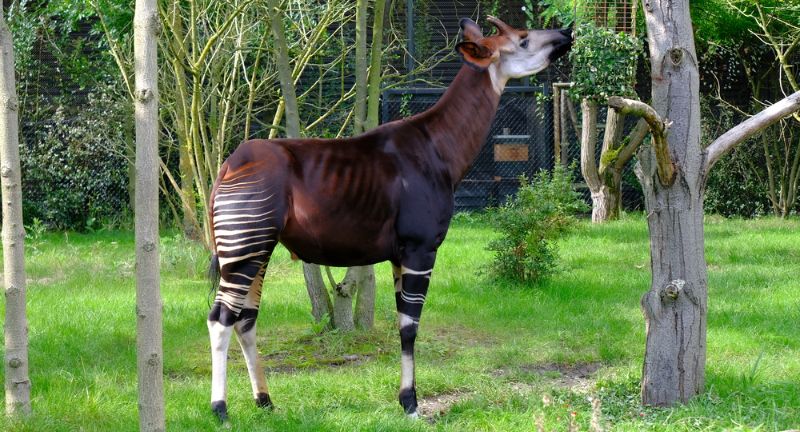
Shutterstock
The Okapi, often referred to as the forest giraffe, is native to the dense rainforests of the Congo in Africa. This elusive animal has striking features, including a long neck, zebra-like stripes on its legs, and a chocolate brown body. Despite its giraffe lineage, the okapi is a solitary creature, rarely seen by humans. Its diet consists mainly of leaves, shoots, and fruits, which it forages from the forest floor.
Proboscis Monkey
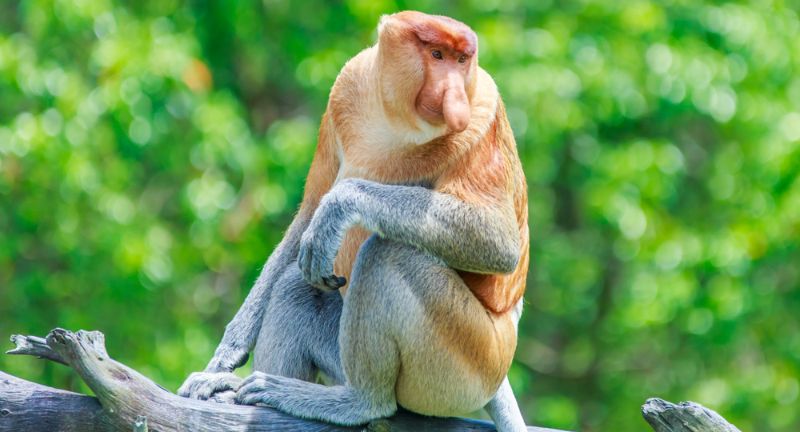
Shutterstock
The Proboscis Monkey is distinguished by its large, protruding nose, which is especially prominent in males and thought to be an attractive trait to females. Found exclusively in the mangrove forests and coastal areas of Borneo, this primate is an excellent swimmer, with webbed feet to aid in navigating its aquatic habitat. Its diet is primarily composed of leaves, seeds, and unripe fruits, which cause its stomach to be bloated, another distinctive feature. Conservation efforts are ongoing to protect this species, which faces threats from habitat destruction and hunting.
Hoatzin
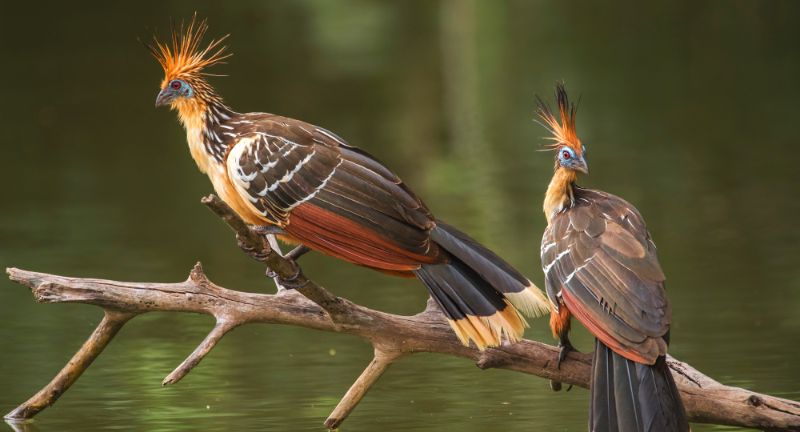
Shutterstock
The Hoatzin, also known as the “stinkbird,” is a bizarre bird native to the Amazon rainforest. It has a unique digestive system that ferments vegetation, causing a manure-like odor, which is the origin of its nickname. The hoatzin’s young have an unusual adaptation: they possess claws on their wings, allowing them to climb trees until their wings are fully developed for flight. This bird, with its striking blue face and rust-colored feathers, leads a communal lifestyle, often found in large groups along swampy rivers.
Jaguar

Shutterstock
The Jaguar is the largest predator in the Americas and a formidable presence in the rainforests of Central and South America. Its beautiful rosette-patterned coat provides excellent camouflage in the dense undergrowth, making it a stealthy hunter. Jaguars are versatile in their diet, preying on over 85 species ranging from fish to mammals. They are solitary animals, with territories that can span over 50 square miles in dense jungle environments.
Amazon River Dolphin
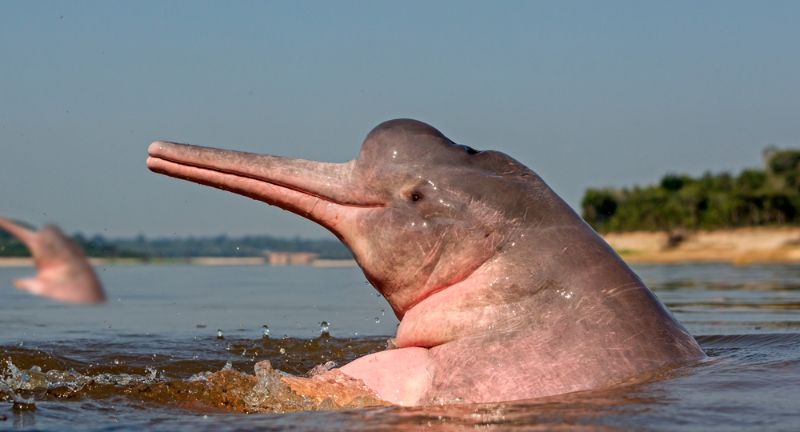
Shutterstock
The Amazon River Dolphin, or pink dolphin, is an iconic species found in the freshwater rivers of the Amazon Rainforest. Its distinctive pink coloration varies from pale to bright pink, which becomes more vibrant as the dolphin ages. These intelligent creatures have a flexible neck and a long, thin snout filled with sharp teeth, aiding in the capture of fish, their primary diet. They play a crucial role in local folklore and are considered to be the most intelligent of the river dolphin species.
Pygmy Marmoset
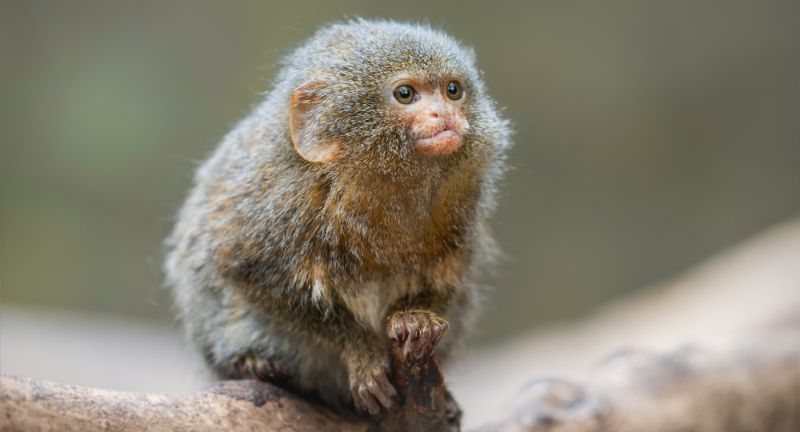
Shutterstock
The Pygmy Marmoset, the world’s smallest monkey, is a remarkable creature native to the rainforests of the western Amazon Basin. Weighing just over 100 grams, this tiny primate has specialized teeth for gouging tree bark to feed on sap and gum. Despite its diminutive size, the pygmy marmoset is a social animal, living in groups that communicate through a complex system of vocalizations, body language, and chemical signals. Its ability to blend into the rainforest canopy makes it difficult for predators to spot.
Tapir
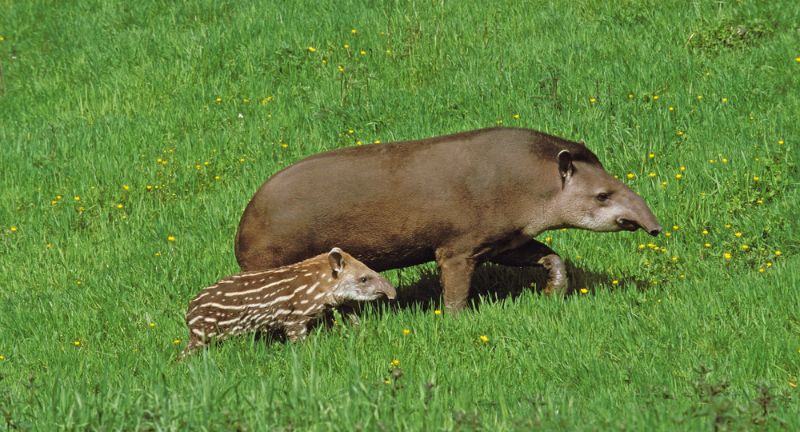
Shutterstock
The Tapir is an unusual-looking mammal with a prehensile snout, resembling a cross between a pig and an elephant. Found in the rainforests of South and Central America, as well as Southeast Asia, tapirs play a crucial role in seed dispersal, contributing to the health of their ecosystems. They are mostly nocturnal, foraging for leaves, fruits, and berries under the cover of night. Despite their size, tapirs are excellent swimmers and can often be found near water bodies, where they take refuge from predators.
Tarsier
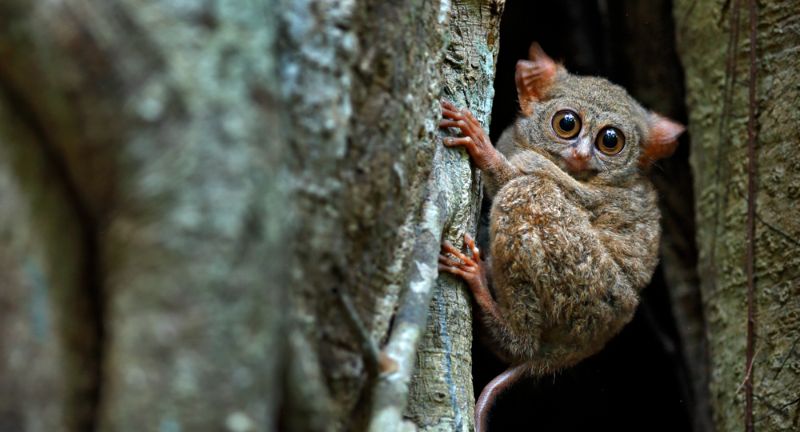
Shutterstock
The Tarsier is a small primate with enormous eyes, each of which is as large as its brain. Native to the rainforests of Southeast Asia, these nocturnal creatures are among the oldest primates, with fossils dating back 45 million years. Tarsiers are carnivorous, feeding primarily on insects, and are known for their incredible jumping ability, which allows them to catch prey or move between tree branches. Their unique anatomical features, including their elongated tarsal bones, give them their name and enable their remarkable agility.
Capybara
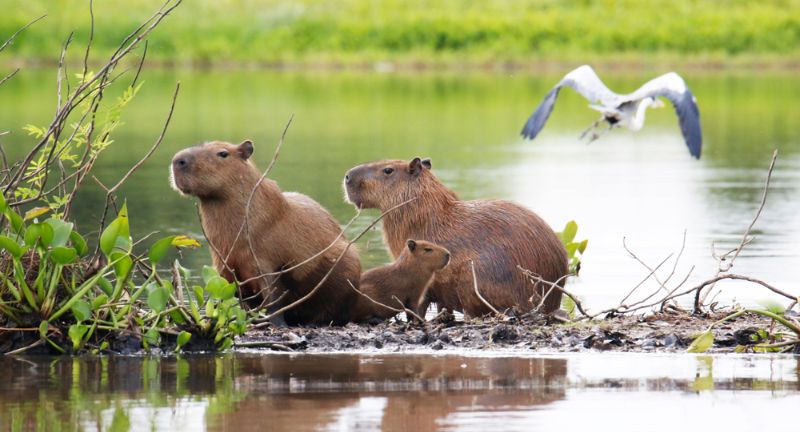
Shutterstock
The Capybara is the largest rodent in the world, reaching sizes of up to 140 pounds and residing in the rainforests of South America. These social animals live in groups along rivers, lakes, and swamps, where they are adept swimmers and can remain submerged for up to five minutes. Their diet consists mainly of grasses and aquatic plants, contributing to the maintenance of their habitats. Capybaras are key prey for many predators, including jaguars, anacondas, and caimans, playing an important role in the food web of their ecosystems.
Sloth
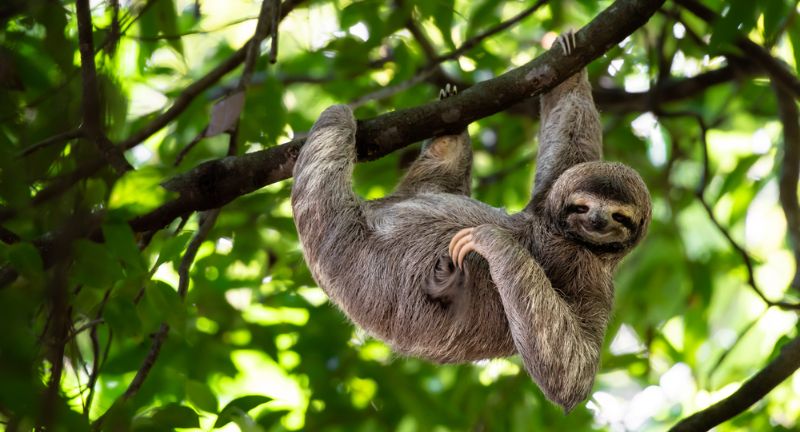
Shutterstock
Sloths are renowned for their slow movement, spending most of their lives hanging upside down in the rainforests of Central and South America. These creatures have adapted to a low-energy diet of leaves, which takes a long time to digest, contributing to their lethargic lifestyle. Their fur hosts a unique ecosystem of algae, insects, and even moths, blending them into the treetops and providing camouflage against predators. Despite their slow nature, sloths are excellent swimmers and can cross rivers to find new feeding grounds or mates.
Leafcutter Ant
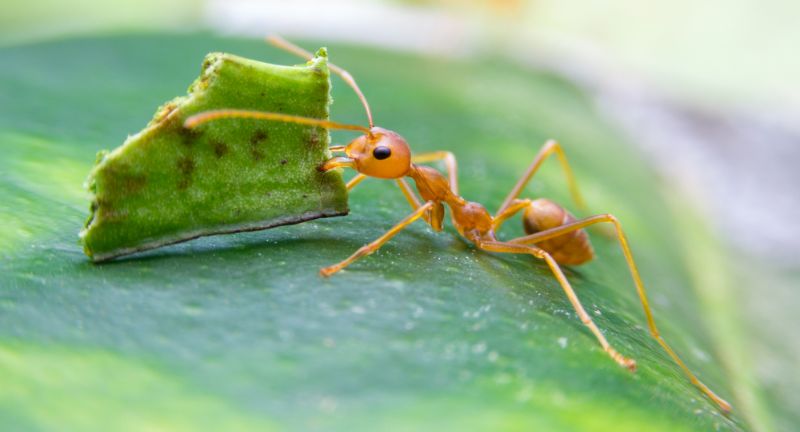
Shutterstock
Leafcutter ants are fascinating insects, found in the tropical rainforests of the Americas, known for their remarkable ability to cut and transport leaves back to their nests. These leaves are not consumed directly but are used to cultivate a fungus, which serves as their primary food source. The ants have a highly organized social structure, with different roles including workers, soldiers, and the queen, demonstrating an incredible example of insect society and cooperation. Their underground nests can be massive, housing millions of individuals and affecting the forest floor’s ecology by enriching the soil.
Orangutan
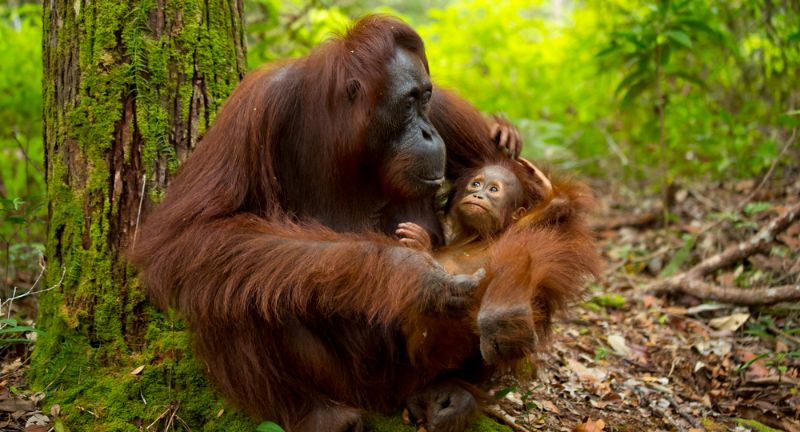
Shutterstock
Orangutans, with their distinctive red fur, are the largest arboreal mammals, spending most of their lives in trees in the rainforests of Borneo and Sumatra. These intelligent primates have been observed using tools for foraging and constructing elaborate sleeping nests each night from branches and foliage. Their diet mainly consists of fruit, along with leaves, bark, and occasionally insects, reflecting their role as seed dispersers in their ecosystems. Orangutans are critically endangered, facing threats from habitat loss due to deforestation, palm oil plantations, and illegal wildlife trade.
Electric Eel
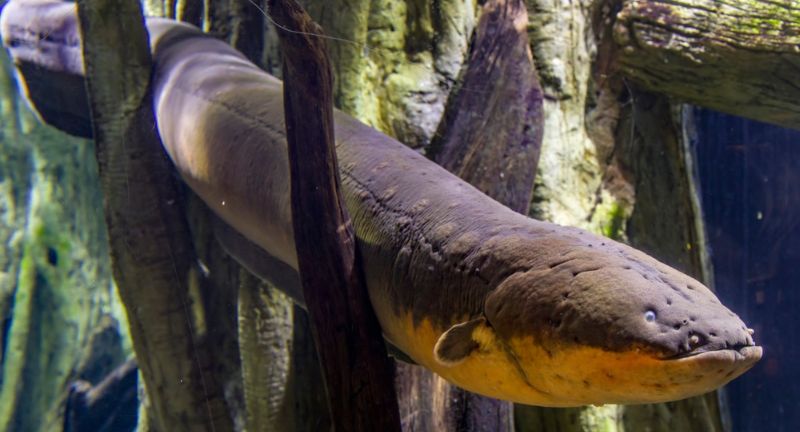
Shutterstock
The Electric Eel, found in the freshwater habitats of the Amazon and Orinoco river basins, is not actually an eel but a type of knifefish. This remarkable creature can generate electric shocks of up to 600 volts, used for hunting, self-defense, and navigation. Despite its name, it primarily relies on a series of small electrical pulses for electrolocation, to detect its environment and communicate with other electric eels. They are apex predators in their habitat, feeding on fish, amphibians, and sometimes small mammals.
Aye-Aye
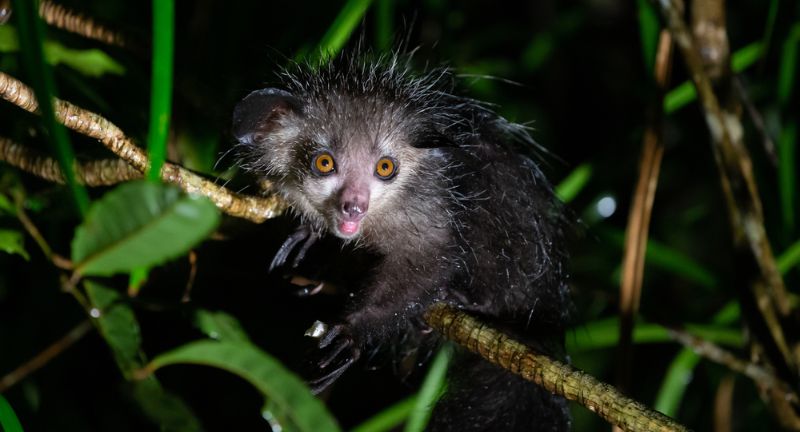
Shutterstock
The Aye-Aye is a nocturnal primate found only in Madagascar, known for its unusual method of finding food through a technique called percussive foraging. It taps on trees to find cavities where insects live, then uses its long middle finger to extract the prey. This lemur is considered one of the most unusual and rare mammals in the world, with its large eyes, bushy tail, and rodent-like teeth that continuously grow. Despite local superstitions that consider it an omen of bad luck, the aye-aye plays a crucial role in its ecosystem as a seed disperser and insect predator.
Poison Dart Frog
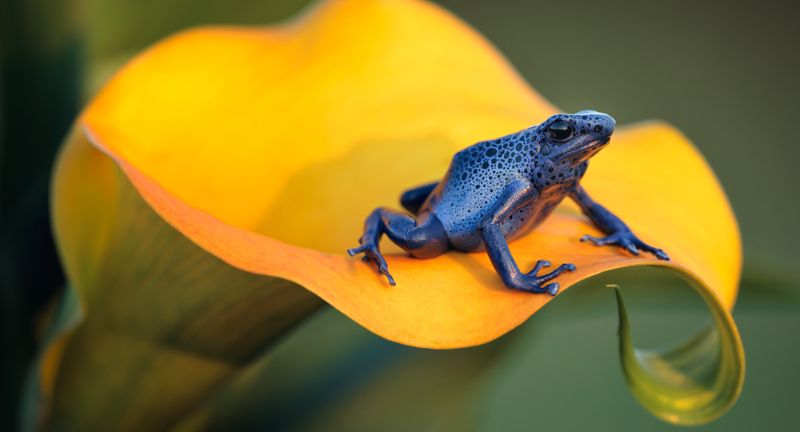
Shutterstock
Poison Dart Frogs are small, brightly colored amphibians found in the tropical rainforests of Central and South America. Their vivid colors serve as a warning to predators about their toxicity, which is derived from their diet of ants, termites, and other insects. Some indigenous people have historically used their poison for hunting by coating the tips of blow darts. Despite their dangerous reputation, these frogs are only harmful if ingested, posing no threat to humans when handled carefully.
Harpy Eagle
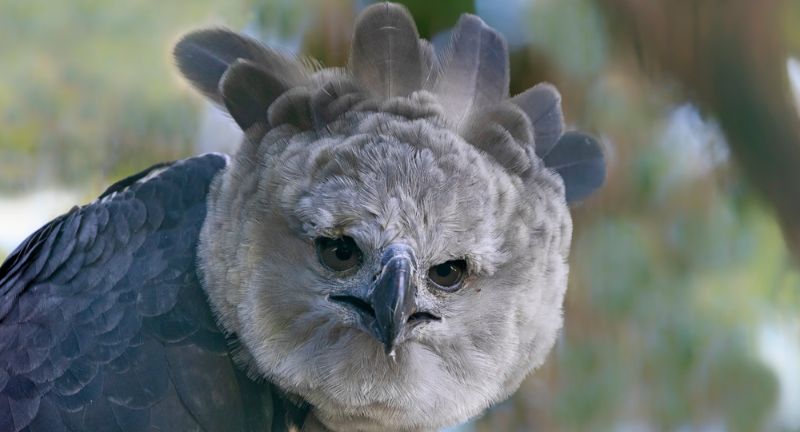
Shutterstock
The Harpy Eagle is one of the largest and most powerful raptors found in the rainforests of Central and South America. With its striking appearance, including large, sharp talons and a distinctive black and white plumage, it is an apex predator, feeding on medium-sized mammals and birds. Its wings are relatively short but broad, allowing it to maneuver through the dense rainforest canopy with ease. The harpy eagle plays a crucial role in maintaining the ecological balance by controlling populations of its prey.
Kinkajou
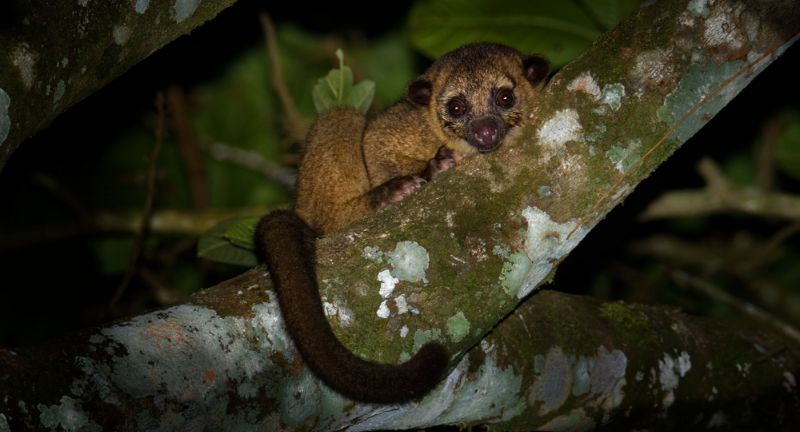
Shutterstock
The Kinkajou, also known as the “honey bear,” is a small, rainforest-dwelling mammal found in Central and South America. Despite its bear-like appearance and prehensile tail, it is actually more closely related to raccoons. Kinkajous are nocturnal and primarily frugivorous, but they also consume insects and small vertebrates. Their long tongues are specially adapted for extracting honey from beehives, which is a favorite part of their diet.
Amazonian Giant Centipede
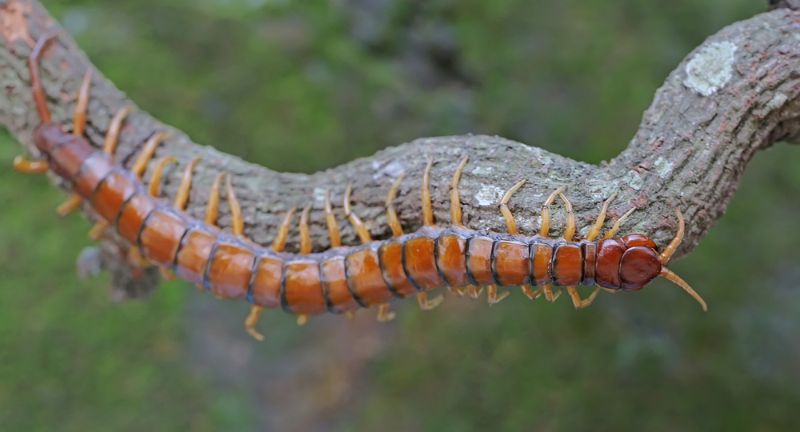
Shutterstock
The Amazonian Giant Centipede is one of the largest centipedes, reaching up to 12 inches in length. This formidable predator is found in the rainforests of South America and is known for its speed and agility. It feeds on a variety of creatures, including insects, tarantulas, small birds, and mammals, using its venomous claws to immobilize its prey. Despite its fearsome appearance and potent venom, it plays an essential role in controlling the population of other small animals.
Piranha
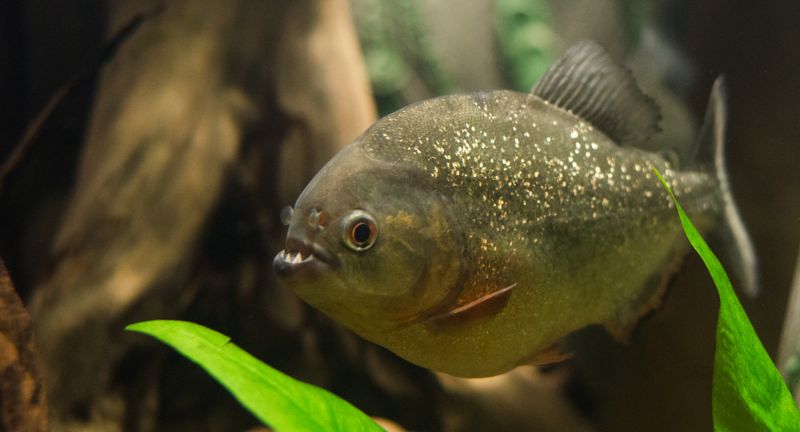
Shutterstock
Piranhas are notorious for their sharp teeth and a reputation for ferocity, found in the freshwaters of the Amazon Basin. These omnivorous fish are known to swarm in large schools, a behavior that is often exaggerated in popular media. In reality, piranhas are scavengers or feed on plant material, insects, and small fish, playing a critical role in the aquatic ecosystem by helping to keep it clean. The fear surrounding piranhas is largely unfounded, as attacks on humans are rare and usually not serious.
Saola
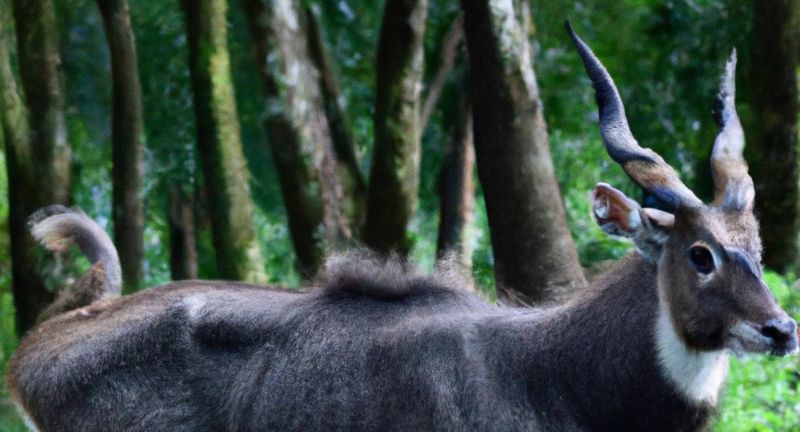
Shutterstock
The Saola, also known as the “Asian Unicorn,” is one of the world’s rarest large mammals, discovered only in 1992 in the Annamite Range of Vietnam and Laos. This elusive creature resembles an antelope in appearance, but is actually more closely related to cattle. Saolas are critically endangered due to habitat loss and poaching, with only a few individuals believed to exist in the wild. Their mysterious nature and rarity make them a high priority for conservation efforts in Southeast Asia.
Goliath Birdeater
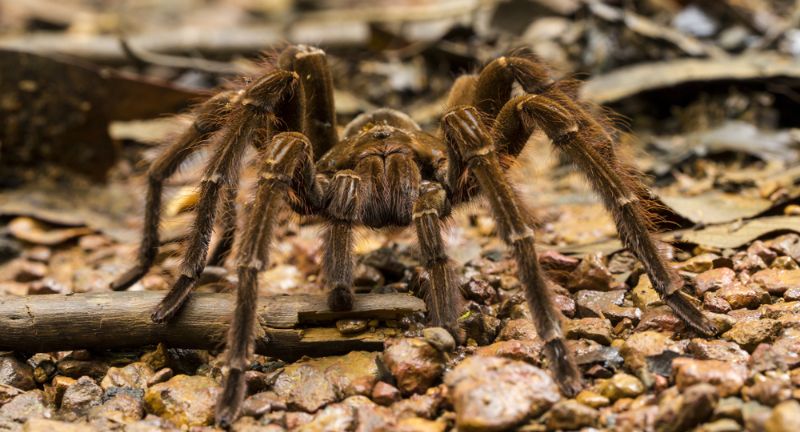
Shutterstock
The Goliath Birdeater is the largest spider by mass, found in the rainforests of South America. Despite its name, it rarely eats birds; instead, its diet consists mainly of insects, small mammals, and amphibians. This tarantula has a leg span of up to 11 inches and is known for its defensive behavior, which includes releasing hairs that cause irritation. The Goliath Birdeater plays an important role in controlling the populations of its prey, contributing to the ecological balance of its habitat.
Wandering Spider
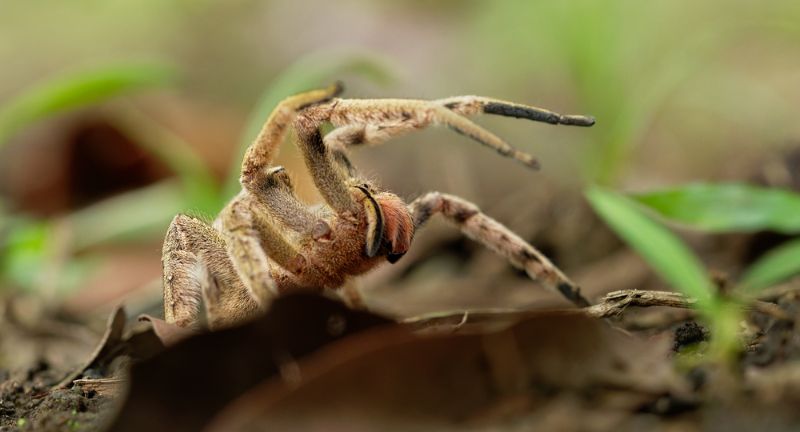
Shutterstock
Wandering Spiders, or Brazilian wandering spiders, are a group of large, aggressive spiders known for their highly venomous bite. They are called “wandering” because they roam the jungle floor at night rather than residing in a lair or a web. These spiders can be found in the rainforests of South and Central America, where they hunt small insects, amphibians, and sometimes even small mammals. While they are considered one of the most dangerous spider species to humans, bites are rare, and they play a crucial role in controlling insect populations in their habitats.
Cassowary
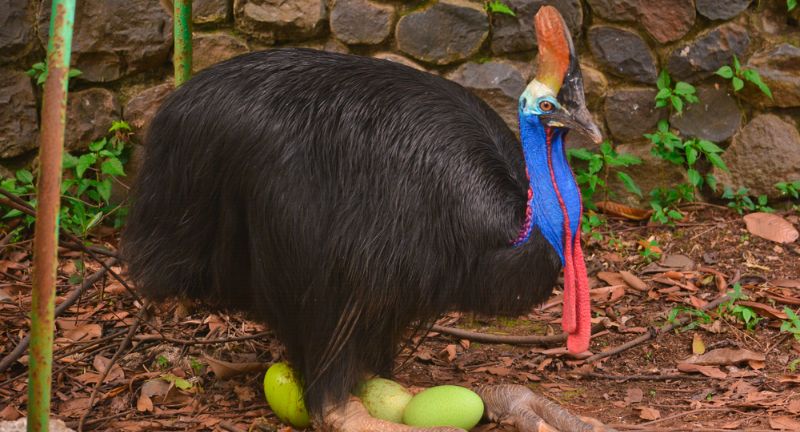
Shutterstock
Cassowaries are large, flightless birds native to the tropical forests of New Guinea, nearby islands, and northeastern Australia. They are known for their striking blue and black plumage and a prominent casque on their heads, used for navigating through dense forest underbrush. Cassowaries are solitary and can be very aggressive, especially when threatened or protecting their nests. They play a crucial role in their ecosystems as seed dispersers, consuming a wide variety of fruits and facilitating forest regeneration.
Red-Eyed Tree Frog

Shutterstock
The Red-Eyed Tree Frog, with its vibrant green body, blue streaks, and bulging red eyes, is a nocturnal amphibian that spends most of its life in the trees. Found in Central and South American rainforests, these frogs are known for their striking appearance and their ability to leap great distances. They have suction cups on their toes that allow them to cling to leaves and branches, even when wet. The Red-Eyed Tree Frog’s bright colors are a form of defense, startling predators and giving the frog a chance to escape.
Panther Chameleon
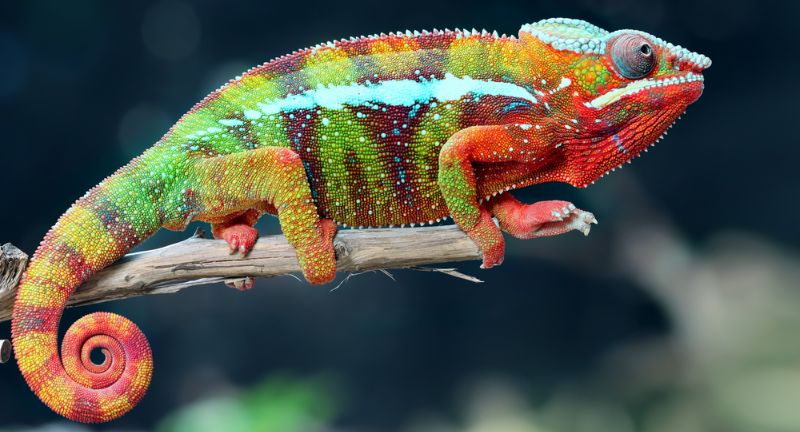
Shutterstock
One of the most striking features of the Panther Chameleon is its ability to change color. This is a common trait among chameleons, but the Panther Chameleon is particularly noted for its vivid color transformations. The color change is not just for camouflage as commonly believed, but is also used for communication and temperature regulation. The chameleon’s skin contains special cells called chromatophores that allow it to change its color in response to different stimuli, such as light, temperature, and mood.
Mata Mata Turtle
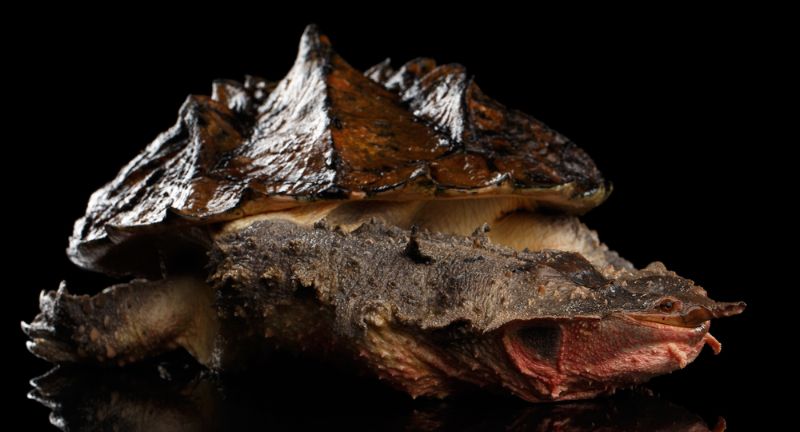
Shutterstock
The Mata Mata Turtle is an aquatic reptile with a distinctive appearance that allows it to blend seamlessly into the leaf litter of its freshwater habitat. Found in the slow-moving rivers and blackwater streams of the Amazon and Orinoco basins, its body is flattened, and its head is triangular with a horned ridge and a protruding snout, resembling fallen leaves and bark. This camouflage aids in its hunting strategy, lying motionless in the water until unsuspecting prey comes within reach. Despite its fearsome appearance, the Mata Mata is a gentle giant, feeding mainly on fish and small invertebrates.
Blue Morpho Butterfly
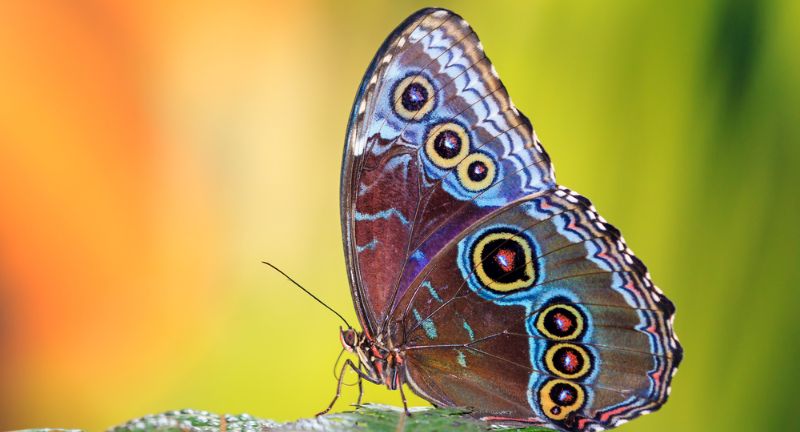
Shutterstock
The Blue Morpho Butterfly is one of the largest and most striking butterflies in the rainforest, renowned for its vibrant iridescent blue wings that span up to six inches across. These butterflies are found in the dense tropical forests of Central and South America, from Mexico to Colombia. When it flutters through the sunlight, the Blue Morpho’s wings create a flashing effect that can be seen from great distances, although this majestic insect spends most of its life in the understory, with wings closed to conceal its bright coloration and blend in with the dark forest floor using the brown underside of its wings. The Blue Morpho’s lifecycle, from egg to caterpillar, to pupa, and finally to butterfly, is a beautiful example of metamorphosis, showcasing the intricate relationships within rainforest ecosystems.
Sunda Flying Lemur
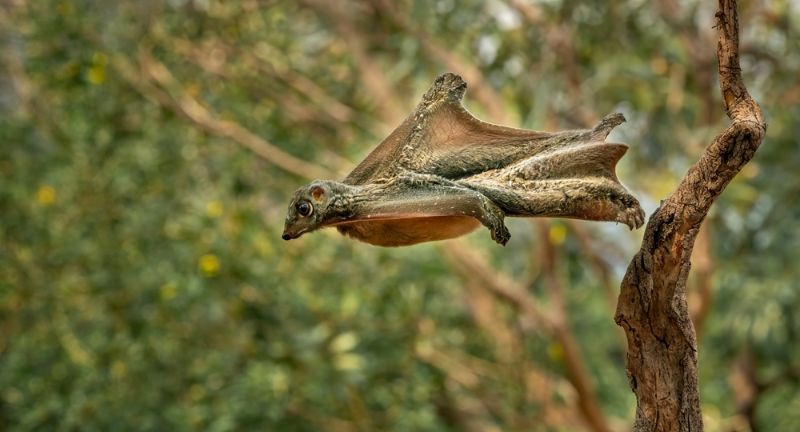
Shutterstock
The Sunda Flying Lemur, also known as the Sunda Colugo, is not a lemur nor does it fly; instead, it glides through the forests of Southeast Asia with the aid of a large gliding membrane that stretches between its limbs. This unique adaptation allows it to move from tree to tree in search of food, covering distances of up to 100 meters in a single glide. Its diet consists mainly of leaves, shoots, flowers, and occasionally fruits, making it a folivorous creature. The Sunda Flying Lemur is nocturnal and spends most of the day clinging to tree trunks or hiding among the foliage, well-camouflaged by its grey or greenish fur that mimics the texture and color of tree bark.
Bald Uakari
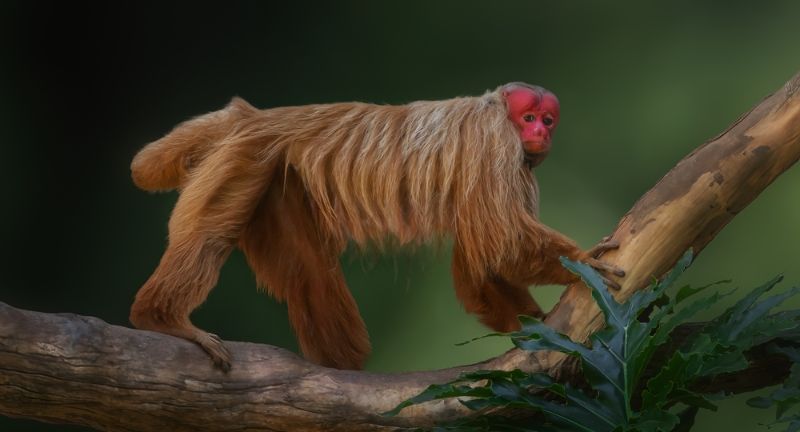
Shutterstock
The Bald Uakari is distinctive for its bald head and bright red face, an unusual feature among primates that is thought to be a sign of health among individuals. Native to the Amazon rainforest, particularly in flooded and swampy areas, this primate has a semi-aquatic lifestyle, with strong swimming abilities. Its diet is primarily frugivorous, consisting of fruits, seeds, and leaves, which it gathers in the forest canopy. Social animals, Bald Uakaris live in large troops that can number up to 100 individuals, facilitating complex social interactions and communication within the group.
Conclusion
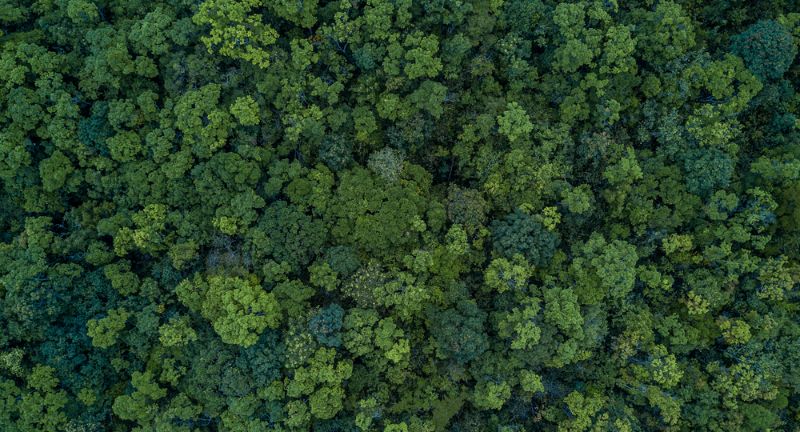
Shutterstock
As we conclude our exploration of the 30 most unusual rainforest animals, it’s evident that the rainforest is not just a collection of trees, but a complex, vibrant community bursting with life in its most extraordinary forms. These animals, with their unique adaptations and ecological roles, highlight the incredible creativity of nature and the importance of preserving these ecosystems against the threats of deforestation, climate change, and biodiversity loss. Each creature, from the elusive jaguar prowling through the underbrush to the ethereal glass frog with its transparent skin, serves as a reminder of our planet’s fragility and the urgent need to protect these irreplaceable habitats. By valuing and conserving the rainforest, we ensure that future generations can continue to discover and learn from its hidden wonders, sustaining the biodiversity that is vital for the health of our planet.
More Amazing Animals+
-


30 Smartest Animals In The World
-


We Promise This Animal Is Not As Annoying As You…
-
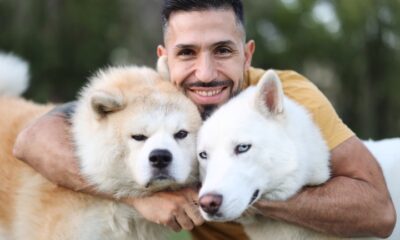

25 Reasons Why Huskies Make The Best Pets
-
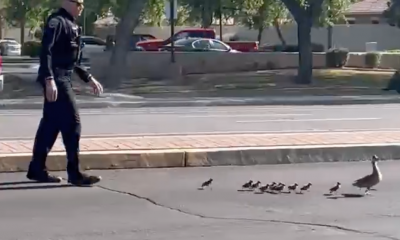

Chandler, Arizona Police Officer Helps Duck and Her Ducklings Cross…
-
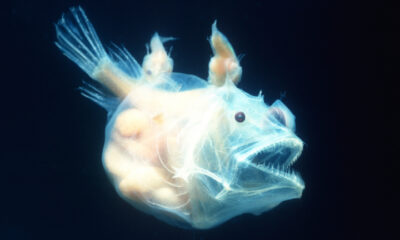

27 Weird Animal Facts That You Didn’t Know
-


Triple otter on the rocks
-


30 Most Venomous Animals In The World
-


25 Deadliest Sea Creatures In The World
-


Ducks Are Cooler Then You Think, Here’s Why
-


20 Rabbit Breeds That Are Just As Unique As They…
-


Roaming Mountain Lion Rescued From a Classroom in California
-


Timothys up early for his morning spa appointment!
